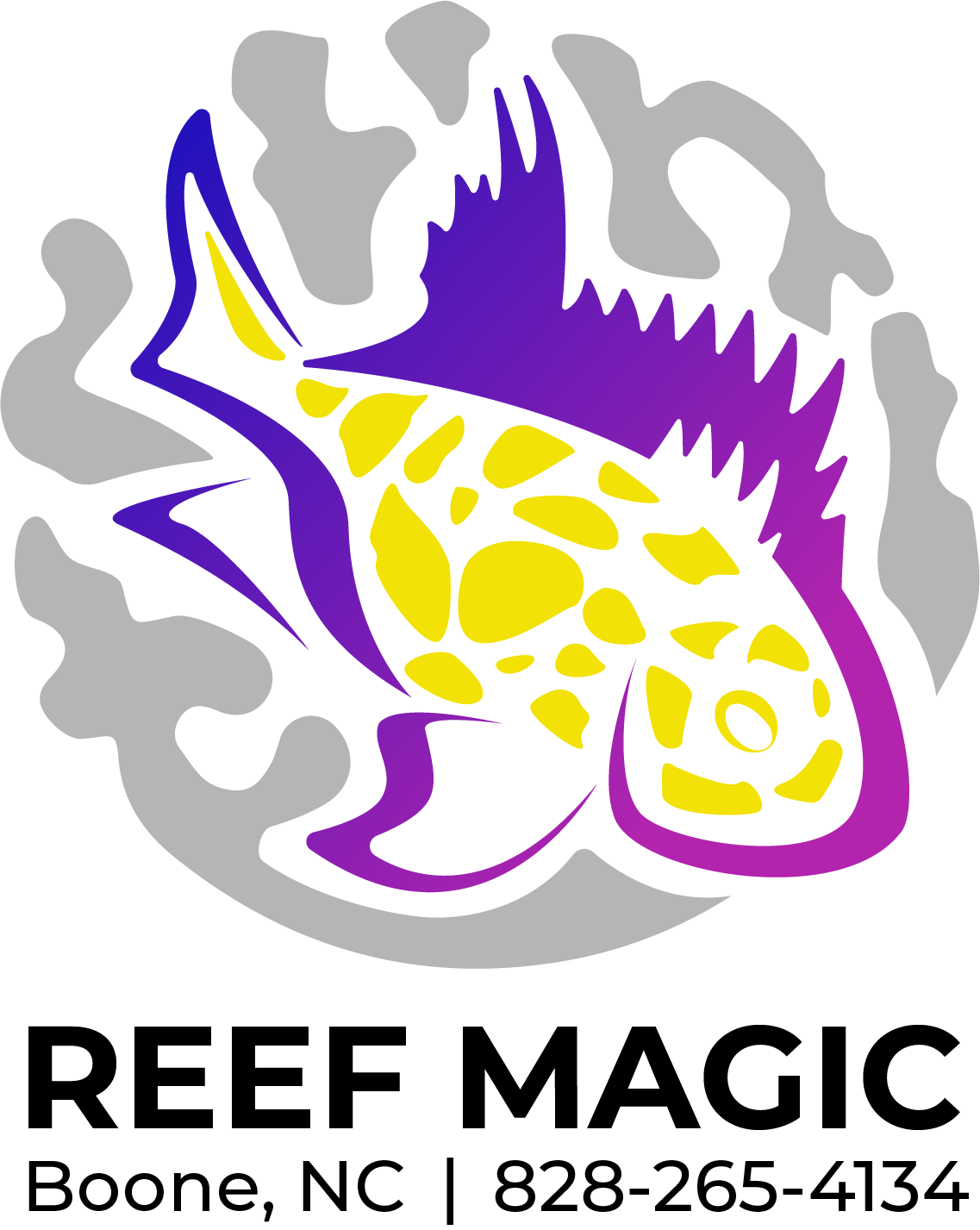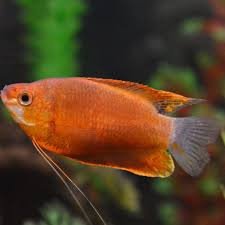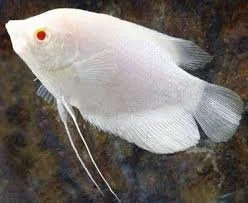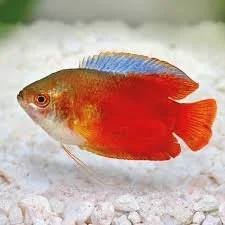 Image 1 of 1
Image 1 of 1


Gourami - Blue
Here are the general requirements for keeping gouramis:
Aquarium size: The aquarium size for gouramis will depend on the specific species. Smaller species like Dwarf Gouramis can be kept in a tank as small as 10 gallons (38 liters), while larger species like the Giant Gourami will require a much larger tank. As a general guideline, provide a tank that is at least 20 gallons (75 liters) to accommodate the average-sized gourami species.
Water parameters: Gouramis are adaptable to a range of water conditions, but it's important to maintain stable parameters. The ideal temperature range is around 75-82°F (24-28°C), pH between 6.0-8.0, and hardness between 5-20 dGH. Research the specific requirements of the gourami species you intend to keep, as different species may have slightly different preferences.
Tank setup: Provide plenty of hiding places and areas for the gouramis to explore. Use live plants, rocks, driftwood, or other decorations to create a natural environment. Gouramis appreciate areas of dense vegetation and floating plants, which can provide cover and create territories.
Filtration and water flow: Use a suitable filtration system to maintain excellent water quality. Gouramis prefer moderate water flow, so adjust the filter output or use baffles to reduce excessive water movement. Ensure efficient mechanical, chemical, and biological filtration to keep the water clean and clear.
Lighting: Provide moderate lighting conditions. Gouramis do not require intense lighting, but it should be sufficient for the growth of live plants if present. Use a lighting system that mimics natural day and night cycles, with a photoperiod of around 8-10 hours of light per day.
Diet: Gouramis are omnivorous and will accept a variety of foods. Offer a balanced diet consisting of high-quality flakes or pellets as their staple food. Supplement their diet with occasional live or frozen foods such as brine shrimp, bloodworms, daphnia, or small insects. Including some vegetable matter in their diet, such as spirulina-based foods or blanched vegetables, is recommended.
Tank mates: Gouramis are generally peaceful and can be kept with a variety of community fish. However, they may display territorial behavior towards similar-looking or brightly colored species. Avoid keeping them with aggressive or fin-nipping tank mates. Good tank mates include other peaceful community fish like tetras, rasboras, and small catfish.
Here are the general requirements for keeping gouramis:
Aquarium size: The aquarium size for gouramis will depend on the specific species. Smaller species like Dwarf Gouramis can be kept in a tank as small as 10 gallons (38 liters), while larger species like the Giant Gourami will require a much larger tank. As a general guideline, provide a tank that is at least 20 gallons (75 liters) to accommodate the average-sized gourami species.
Water parameters: Gouramis are adaptable to a range of water conditions, but it's important to maintain stable parameters. The ideal temperature range is around 75-82°F (24-28°C), pH between 6.0-8.0, and hardness between 5-20 dGH. Research the specific requirements of the gourami species you intend to keep, as different species may have slightly different preferences.
Tank setup: Provide plenty of hiding places and areas for the gouramis to explore. Use live plants, rocks, driftwood, or other decorations to create a natural environment. Gouramis appreciate areas of dense vegetation and floating plants, which can provide cover and create territories.
Filtration and water flow: Use a suitable filtration system to maintain excellent water quality. Gouramis prefer moderate water flow, so adjust the filter output or use baffles to reduce excessive water movement. Ensure efficient mechanical, chemical, and biological filtration to keep the water clean and clear.
Lighting: Provide moderate lighting conditions. Gouramis do not require intense lighting, but it should be sufficient for the growth of live plants if present. Use a lighting system that mimics natural day and night cycles, with a photoperiod of around 8-10 hours of light per day.
Diet: Gouramis are omnivorous and will accept a variety of foods. Offer a balanced diet consisting of high-quality flakes or pellets as their staple food. Supplement their diet with occasional live or frozen foods such as brine shrimp, bloodworms, daphnia, or small insects. Including some vegetable matter in their diet, such as spirulina-based foods or blanched vegetables, is recommended.
Tank mates: Gouramis are generally peaceful and can be kept with a variety of community fish. However, they may display territorial behavior towards similar-looking or brightly colored species. Avoid keeping them with aggressive or fin-nipping tank mates. Good tank mates include other peaceful community fish like tetras, rasboras, and small catfish.






